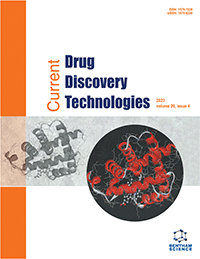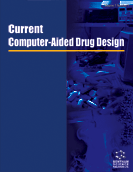Abstract
This study examined the antibacterial properties of nineteen benzoxazole, isoniazid, ethionamide and salicylanilide derivatives against Staphylococcus aureus (S. aureus). It was found that three salicylanilide-derived compounds demonstrated antistaphylococcal activity: 5-Chloro-2-hydroxy-N-(4-(trifluoromethyl)phenyl)benzamide (5-Cl-4-CF3- SAL), 4-chloro-2-(3-chlorophenylcarbamyoyl)phenyl)-2-(benzyloxycarbonylamino)propanoate (AIM31) and 4-chloro-2- (4-(trifluoromethyl)phenylcarbamoyl)phenyl acetate (AIM33). Investigation of the chemical structures of these three compounds and comparison with a non-inhibitory salicylanilide compound (i.e. 5,3-diCl-SAL) illustrated that different combinations of chemical groups at defined positions on the salicylanilide core structure had a marked influence on antistaphylococcal activity. The most effective compound was AIM33 which inhibited staphylococcal growth and displayed an initial MIC value of 3.12 μg ml-1 and subsequent investigation revealed that an MIC as low as of 0.5 μg ml-1 was achievable. In this case, the dual presence of a trifluoromethyl group and an acetylated phenolic hydroxyl to the salicylanilide core structure led to greatly enhanced activity.
Keywords: Antimicrobial resistance, chemotherapeutic agents, MRSA, salicylanilide, Staphylococcus aureus, anti-staphylococcal drugs, Antistaphylococcal Activity, nosocomial pathogens, benzoxazole
Current Drug Discovery Technologies
Title: Antistaphylococcal Activity of Novel Salicylanilide Derivatives
Volume: 9 Issue: 1
Author(s): Annmarie Mollaghan, Jarmila Vinsova, Ales Imramovsky, Lesley Cotter, Brigid Lucey, Jim O'Mahony, Aisling Costelloe and Aidan Coffey
Affiliation:
Keywords: Antimicrobial resistance, chemotherapeutic agents, MRSA, salicylanilide, Staphylococcus aureus, anti-staphylococcal drugs, Antistaphylococcal Activity, nosocomial pathogens, benzoxazole
Abstract: This study examined the antibacterial properties of nineteen benzoxazole, isoniazid, ethionamide and salicylanilide derivatives against Staphylococcus aureus (S. aureus). It was found that three salicylanilide-derived compounds demonstrated antistaphylococcal activity: 5-Chloro-2-hydroxy-N-(4-(trifluoromethyl)phenyl)benzamide (5-Cl-4-CF3- SAL), 4-chloro-2-(3-chlorophenylcarbamyoyl)phenyl)-2-(benzyloxycarbonylamino)propanoate (AIM31) and 4-chloro-2- (4-(trifluoromethyl)phenylcarbamoyl)phenyl acetate (AIM33). Investigation of the chemical structures of these three compounds and comparison with a non-inhibitory salicylanilide compound (i.e. 5,3-diCl-SAL) illustrated that different combinations of chemical groups at defined positions on the salicylanilide core structure had a marked influence on antistaphylococcal activity. The most effective compound was AIM33 which inhibited staphylococcal growth and displayed an initial MIC value of 3.12 μg ml-1 and subsequent investigation revealed that an MIC as low as of 0.5 μg ml-1 was achievable. In this case, the dual presence of a trifluoromethyl group and an acetylated phenolic hydroxyl to the salicylanilide core structure led to greatly enhanced activity.
Export Options
About this article
Cite this article as:
Mollaghan Annmarie, Vinsova Jarmila, Imramovsky Ales, Cotter Lesley, Lucey Brigid, O'Mahony Jim, Costelloe Aisling and Coffey Aidan, Antistaphylococcal Activity of Novel Salicylanilide Derivatives, Current Drug Discovery Technologies 2012; 9 (1) . https://dx.doi.org/10.2174/157016312799304525
| DOI https://dx.doi.org/10.2174/157016312799304525 |
Print ISSN 1570-1638 |
| Publisher Name Bentham Science Publisher |
Online ISSN 1875-6220 |
 31
31
- Author Guidelines
- Graphical Abstracts
- Fabricating and Stating False Information
- Research Misconduct
- Post Publication Discussions and Corrections
- Publishing Ethics and Rectitude
- Increase Visibility of Your Article
- Archiving Policies
- Peer Review Workflow
- Order Your Article Before Print
- Promote Your Article
- Manuscript Transfer Facility
- Editorial Policies
- Allegations from Whistleblowers
- Announcements
Related Articles
-
Heterocycles in the Treatment of Neglected Tropical Diseases
Current Medicinal Chemistry Update of QSAR & Docking Studies of the GSK-3 Inhibitors
Current Bioinformatics Nanobiotechnological Approaches Against Multidrug Resistant Bacterial Pathogens: An Update
Current Drug Metabolism Meet Our Editorial Board Member
The Natural Products Journal Tolerance Induction by Gene Transfer to Lymphocytes
Current Gene Therapy Scalarane Sesterterpenoids
Current Bioactive Compounds Chemoinformatics Approach for Building Molecular Networks from Marine Organisms
Combinatorial Chemistry & High Throughput Screening Novel Dibenzothiepins with Antibiofilm Activity Demonstrated by Microbiological Assays and Molecular Modeling
Current Organic Chemistry Death Due to COVID-19 in an Infant with Combined Immunodeficiencies
Endocrine, Metabolic & Immune Disorders - Drug Targets A Case of Neurosarcoidosis Mimicking Brain Tumor
Current Medical Imaging Recent Applications of Doebner, Doebner-von Miller and Knoevenagel-Doebner Reactions in Organic Syntheses
Current Organic Synthesis Epigenetic Control Using Natural Products and Synthetic Molecules
Current Medicinal Chemistry A Bibliometric Analysis of Global Research on Lophomonas Spp. in Scopus (1933-2019)
Infectious Disorders - Drug Targets The Multifaceted Roles of Molecular Dynamics Simulations in Drug Discovery
Current Pharmaceutical Design The Yin and Yang of Inflammation
Current Molecular Medicine A New Catalytic Method for Eco-Friendly Synthesis of Quinoxalines by Zirconium (IV) Oxide Chloride Octahydrate Under Mild Conditions
Letters in Organic Chemistry Exploring Coumarin and Chalcone Analogues as Potential Antimycobacterial Agents
Anti-Infective Agents An Overview on Chemistry and Biological Importance of Pyrrolidinone
Current Organic Synthesis Predictive and Prognostic Value of Ascitic Fluid Mannose Binding Lectin in Patients with Spontaneous Bacterial Peritonitis
Anti-Inflammatory & Anti-Allergy Agents in Medicinal Chemistry Purine Salvage Pathway in Mycobacterium tuberculosis
Current Medicinal Chemistry


























